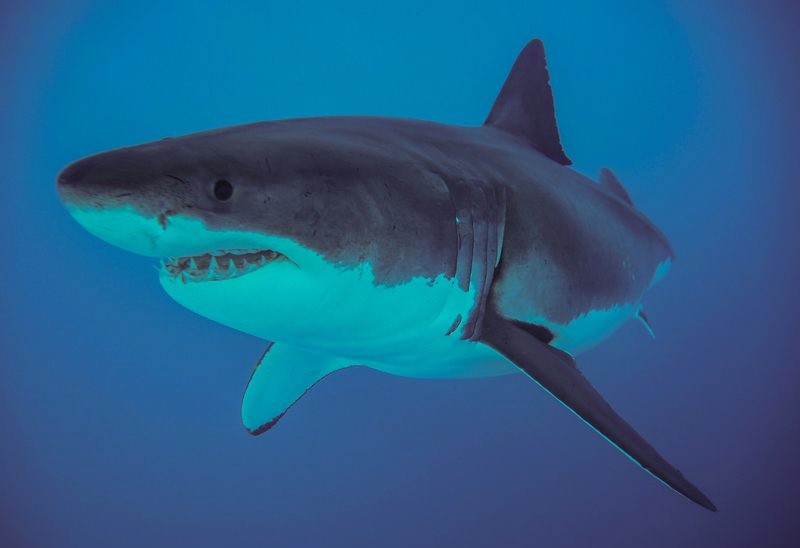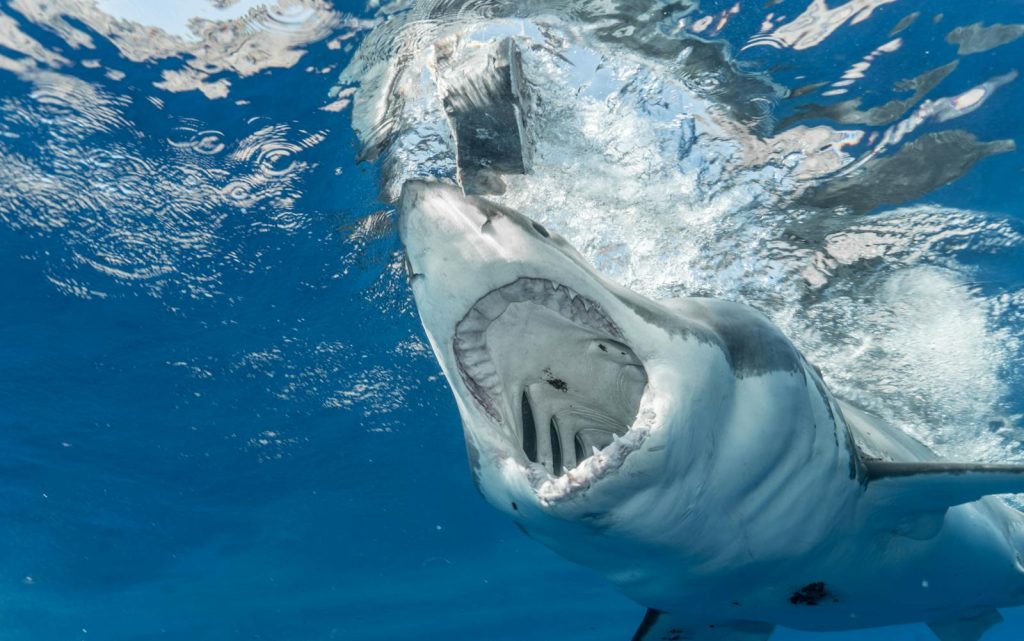What Do Sharks Eat?
Sharks are renowned as some of the most effective predators in the ocean, sitting at the top of the marine food chain. They have a diverse diet, preying on a vast array of marine life.
From tiny fish to massive whales, virtually all oceanic animal life can fall prey to sharks. But what exactly forms the bulk of a shark’s diet? Do they have a preference for fish, or do they lean more towards marine mammals? In this exploration, we’ll delve into the specifics of what sharks typically eat and discuss where they find most of their food in the ocean’s depths.

The Shark Diet
Sharks come in various shapes and sizes, meaning that their prey will differ depending on the type of shark and where they live. Let’s go through the main sources of sustenance in a shark’s diet and what different species of sharks generally eat.

Fish
Sharks love eating fish. Fish of all sizes can end up as prey to a shark, including other sharks. Sharks hunt fish by using sensory receptors located on their sides called lateral lines, which allow them to feel differences in pressure or disturbances in the water. Fish vary in their nutritional content, with some being high in fats and others lean. On average, an ounce of fish meat has between 40 and 80 calories.
Seals and Sea Lions
Large sharks, like the great white, hunt seals and sea lions by thrusting themselves towards the surface and grabbing onto the animal with their powerful jaws. Seals and sea lions are high in fat due to their blubber, making them an extremely nutritious meal for a large shark. One large seal or sea lion can sustain a shark for an entire week. An ounce of seal or sea lion meat has approximately 30 calories.
Mollusks
Sharks that eat mollusks tend to be smaller. They prey on small, shelled animals that have no means of escape. Some sharks, like hammerheads, eat a lot of squid and octopus. Sharks that hunt mollusks do it in various ways, depending on whether the mollusks are shelled or not. The nutritional value of mollusks varies, with octopus being high in protein but low in fat.
Crustaceans
Sharks that eat crustaceans live at the bottom of the ocean, as their prey lives there too. These sharks have flat crushing teeth that they use to crush and grind shells. Crustaceans are high in protein but low in fat and other nutrients, with between 20 and 40 calories per ounce.
Dolphins and Small Whales
Large sharks, such as the great white and tiger shark, prey on dolphins and small whales. They use different tactics when hunting these intelligent and fast marine mammals. Dolphins and whales are high in fat and protein, with approximately 22 calories per ounce of meat.
Plankton
Only a few types of sharks feed on plankton, including the whale shark and the basking shark. These sharks filter-feed by filtering massive quantities of water through their mouths, separating plankton from the water. Plankton has almost no nutritional value, and there are approximately 17 calories per ounce.
How Much Do Sharks Eat?
The amount of food a shark eats depends on its size. In general, sharks eat between 0.5 and 3 percent of their total body weight each time they hunt. They typically hunt once every few days, as their stomachs need time to digest the food.
How Do Sharks Collect Food?
Sharks collect food in two primary ways – filter-feeding or hunting. Filter-feeding sharks have specially designed mouths that filter plankton that they can eat. Other sharks hunt their prey using different methods depending on the type of animal they’re hunting. They employ various tactics to capture their prey, whether it’s fish, mollusks, or marine mammals.
Final Thoughts
Sharks have a diverse diet and eat a wide variety of animals. Their prey ranges from fish and marine mammals to mollusks and crustaceans. Sharks are skilled hunters and play a crucial role in maintaining the balance of the ocean ecosystem.
Frequently Asked Questions
1. What do sharks eat?
Sharks eat a variety of animals, including fish, marine mammals, mollusks, crustaceans, and even plankton.
2. Do sharks only eat meat?
Yes, sharks are carnivores and primarily eat meat. They do not have the ability to digest plant matter.
3. Can sharks eat humans?
While shark attacks on humans are rare, some species of sharks have been known to attack humans who are mistaken for their natural prey. It’s important to note that most sharks do not see humans as a food source.
4. How often do sharks eat?
Sharks typically eat once every few days, as their stomachs take time to digest food. The frequency of their meals also depends on the availability of food in their habitat.
5. Are all sharks apex predators?
No, not all sharks are apex predators. While many sharks are top predators in their ecosystems, some smaller species of sharks are preyed upon by larger sharks and other marine animals.
6. What is the largest shark?
The whale shark is the largest shark and fish in the ocean. It can grow up to 40 feet in length and weigh up to 20 tons.
7. Do sharks eat each other?
Some species of sharks are cannibalistic and will eat other sharks if given the opportunity. This behavior is more commonly observed in larger sharks.
8. How do sharks find their prey?
Sharks have a highly developed sense of smell that allows them to detect the scent of blood or other chemical signals in the water. They also rely on their vision and the sensitive sensory receptors on their sides called lateral lines.
9. Can sharks survive without eating for a long time?
Sharks can survive for extended periods without food, but they do need to eat regularly to maintain their energy levels and overall health.
10. Are sharks important for the ocean ecosystem?
Yes, sharks play a crucial role in maintaining the balance of the ocean ecosystem. As top predators, they help regulate the populations of other marine species and contribute to the overall health and diversity of marine ecosystems.



